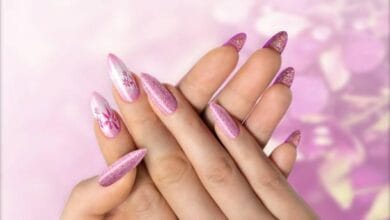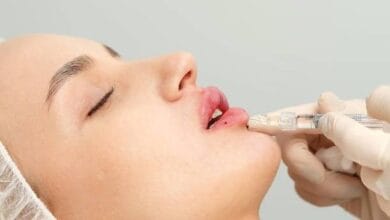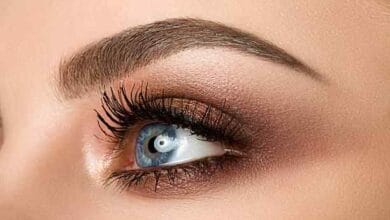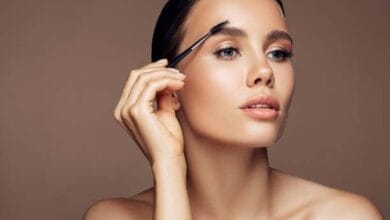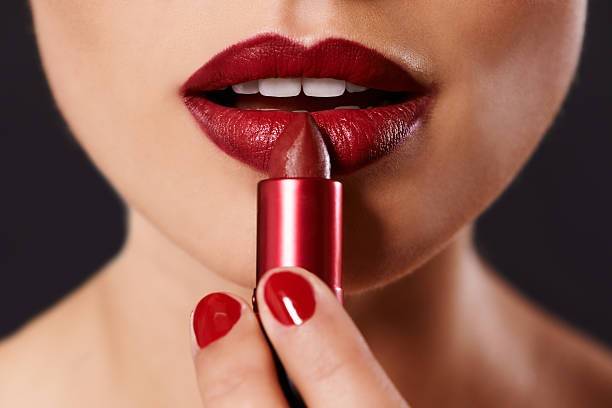
If you frequently use lipstick, you may have been concerned about the whole process of making it. How is lipstick made? Have you ever also wondered what ingredients they use? Are they safe for your health? If you frequently use lipstick, you may have been concerned about the whole process of making it. Have you ever also wondered what ingredients they use?
Are they safe for your health? Remember that you’ll be putting them near your mouth, which means a little care is needed to avoid contamination. If you have wondered how this cosmetic product is made, you’re in the right place. Let’s go through the process together and learn more.
What are the Main Ingredients Used in the Manufacturing of Lipstick?
There are several ingredients used in the process of making lipstick. You need to know this so that you can identify if there are any of them that may cause some allergies to you. Lipstick contains different oils and waxes mixed at varying temperatures. The amount of pigments used and the raw materials allowed to be used are also strictly regulated by several bodies, such as the FDA and the EU. The amount of pigments used and the raw materials permitted to be used are also strictly regulated by several bodies, such as the FDA and the EU.
The oils used include:
- Petrolatum or mineral oil
- Castor oil
- Waxes such as carnauba, beeswax, and candelilla
- Silicone compounds
- Pigment dispersants
- Emollients
- Fragrances
- Preservatives
The required ratio for mixing the oil is 50 to 70%, while the pigment is 5 to 15%. The wax, on the other hand, is 20 to 30%. The most important thing that sets each lipstick apart in users’ minds is the pigmentation.
The color of lipstick can be obtained from various ingredients, such as animal, plant, synthetic, and mineral. A good example is the color made from cochineal insects, which are killed, dried, and ground into fine powder. They are then processed to achieve a brilliant crimson dye. Alcohol is also among the preservatives in lipsticks.
The Process of Lipstick Manufacturing
There are different stages involved in the manufacturing of lipstick. It starts with choosing raw materials, mixing them at different temperatures, grinding and filtering them, molding, cutting, and trimming, quality control checks, packaging, and then final inspection.
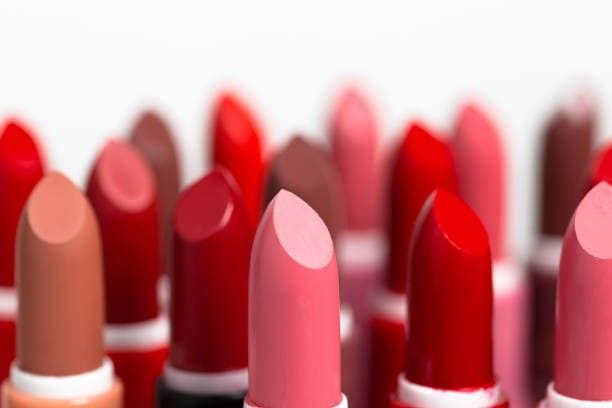
Choosing the raw materials and preparing them
We mentioned earlier that to manufacture lipstick, we need oil, wax, pigments, and fragrances. During the selection process, plant wax, beeswax, and paraffin are selected to be used during the waxing stage.
Besides wax, there’s also the selection of oil. These oils are vegetable oils, mineral oils, and castor oil. Using oil is essential as it offers shine and lubrication to the lipstick. That’s why your lips will never dry when you apply lipstick.
There’s also the selection of pigments, which are either inorganic or organic. Most people prefer using organic pigments due to their sound quality. On the other hand, the inorganic pigments are not of such good quality because they easily fade and are pretty unstable. However, they offer many vibrant colors. The last ingredients are the fragrances. They are added to provide a pleasant smell during application and to avoid boredom.
Heating of oil and Wax
Before the next stage, which involves mixing, the oil and wax are heated to achieve the desired temperatures. The oil is put in the process vessel and heated to 80-85 degrees Celsius. On the other hand, the waxes are placed in a hemispherical vessel that is jacketed and heated. They may add oil to the kettle to help with the whole process. The main challenge during this stage is that melting the wax takes quite a long time. Some waxes that are in solid form may need to be broken up first before being added to the kettle.
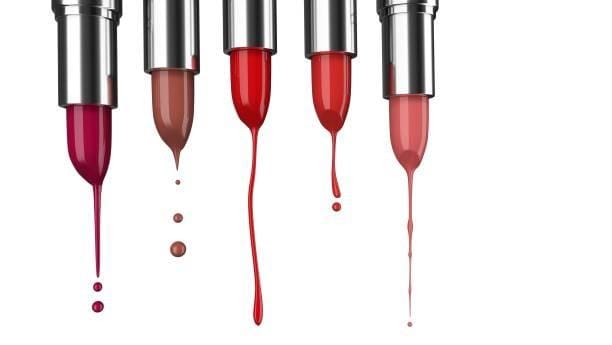
Mixing the raw materials
Once the raw materials are assembled, the next step is mixing them—all the chosen oils, waxes, fragrances, and pigments are mixed in different proportions. As mentioned, the oil is 50 -60%, dyes and fragrances are 10 -20%, and wax is 20-30%. After the mixing, the whole mixture is heated so that the waxes and oils can melt to form a homogeneous blend.
All this is done in a mixing kettle, where heat is controlled and a lot of stirring is done to ensure uniformity and stability of the final product. To prevent the grainy feel of the lipstick, the mixture goes through a three-roller mill to grind the pigment. Once this is done, everything is added to the hot wax until it achieves the same consistency of color. After a stable blend is formed, it will be ready for the next stage, which is grinding.
If the fluid lipstick is supposed to be used immediately, it must be maintained at a specific temperature. However, if it is mass stored before usage, they may need to reheat it once again and confirm the consistency of the color. Everything must be adjusted and maintained at a specific temperature until it can be poured.
The Grinding and Filtering Process
The uniform blend formed will now undergo the grinding and filtering process. This is to create fine-milled particles that are also uniform in size and distributed uniformly. This stage is crucial as it prevents a gritty-textured lipstick. A roller mill is used during grinding to reduce the pigment size and ensure even dispersion. Filtering is vital to eliminate undissolved particles and any impurities. The final product is a refined paste with a smooth texture. This smooth paste is now ready for molding.
The Molding Process
This stage involves pouring the smooth-textured paste into the lipstick molds at a specific temperature. This helps create the desired lipstick shapes. The molds’ design determines the lipstick’s shape, so it is essential to consider precision during the molds’ creation. At this stage, the speed of cooling and temperature are also controlled to get the best stability and hardness in the lipstick. Cooling can take several minutes.
During this process, much attention is paid to the cooling temperature. The required temperature of the freezer needs to start from -2 to 2 Degrees Celcois. They must examine whether the machine has frost inside, and if it is more than that. If it has some frost, they must spray it with alcohol for quick ablation. The freezer is also checked to see whether it is working well. If it is normal, it can be restarted and checked after 5 minutes to see if everything is working well. Excess water in the freezer is then cleaned up.
The cooling line speed shouldn’t exceed 20 degrees Celsius at this stage. The mold is also wrapped with cloth to ensure quality clearance when removing the lipstick. It is also wrapped using a piece of fabric for drafting. It is then checked for a dirty appearance, broken tips, or air bubbles, among other things. Should there be any defects, that mold will be removed. By this time, the lipstick is almost ready to be used.
Cutting and Trimming
After achieving the required shape, the following process is trimming and cutting. At this stage, the lipstick is solid, and they want to remove it from the molds. They now want to eliminate excess material to achieve a uniform shape, so they cut and trim it. The lipstick surface is polished during trimming to have a glossy and smooth finish.
Quality Control
We know the next stage is packaging, but a quality control check must be done. Every lipstick batch goes through a thorough quality control check before being put in the package. During quality control checks, they analyze the smoothness, hardness, shine, and color consistency. All this is done to ensure that it meets the industry standards and enhances a better user experience. Once this is done, they will be added to the desired package.

Another thing to note is that the procedures involved in quality control should meet the FDA standards. Lipstick is a sensitive cosmetic that is ingested and should be safe. It should use strictly safe ingredients throughout the manufacturing process and be free from contamination.
Every batch of lipstick produced is sampled and tested to confirm that it meets the quality standards. The appearance of the final product is also essential. Every tube involves a final inspection, which the consumer does. If it isn’t satisfactory, the retail level rejects it. There should also be a range of colors.
Pigment dispensation is also checked in every new batch and is usually controlled during the reheating of the lipstick mass. Colorimetric equipment provides a numerical method of controlling the lipstick shade. It matches the previous batches by giving the numerical reading of the shades.
The Special Lipstick tests
Before the lipstick is released, it also undergoes two special tests: the rupture test and the heat test. During the rupture test, the manufacturers put the lipstick in two holders in an extended position. They then add weight to the holder on the lipstick portion at intervals of 30 seconds up to the time the lipstick will rupture. Next, the pressure to rupture the lipstick must be checked against the manufacturer’s standards.
On the other hand, the heat test involves putting the lipstick in an extended position on top of the holder. It is then left at a constant temperature of more than 54 Degrees Celsius for a whole day. The lipstick shouldn’t drop or be distorted.
Packaging
After passing quality control checks, the lipsticks are sent to the packing department, where the process of packing is also done systematically. We have the outer packaging and the inner packaging. During the inner packing, they usually put together the lipstick bullet in the lipstick tube. The outer packaging deals with the printing and designing of the packaging box.
During inner packing, the manufacturers ensure the lipstick bullet fits in well and safely and is not prone to physical damage. The outer packaging is done for appealing purposes and to attract more customers. It also offers essential information like the date of manufacturing and expiration, among other details.
Packaging includes a wide range, from individual packs to bulk packs. Cosmetic bags are also used to pack them. The packaging of lipstick depends on the retailers’ outlets. It can also be automated or not. Whatever is used to package will rely on the end product, other than the manufacturing process.
Final Inspection
Everything is almost ready, but a little countercheck is done to ensure accuracy. This is the final inspection stage before shipping. During the last stage of inspection, the people packing make sure that the lipstick has intact packaging and all written information is accurate. Once the last check is done, the lipstick is shipped to different warehouses for further distribution.
FAQS
What ingredients are used during the Process of making lipstick?
The pigments, also known as colorants, offer the needed color and include titanium dioxide, iron oxides, and natural colors. Emollients, antioxidants, and perfumes are other extra constituents.
What was lipstick used for back then?
In ancient Egypt, people loved using lipstick to signify power, beauty, and higher social status.
Which insect is used to make lipstick?
The cochineal insect is well known for its red pigment and is used in preparing lipstick. From this insect, a pigment known as carmine is removed. This pigment is red and is derived from the scales of the cochineal insect. You can find this ingredient in the lipstick’s red shades.
How do they make lipstick pigment?
Several colorants are mixed in the oil base and wax to make lipstick pigments.
Can lipstick be made from animals?
Yes, absolutely. Lipstick can also be made from animals other than insects. For example, sheep wool contains lanolin, which is used as an emollient in lipstick. Beeswax, made from wax, is also a common ingredient.
